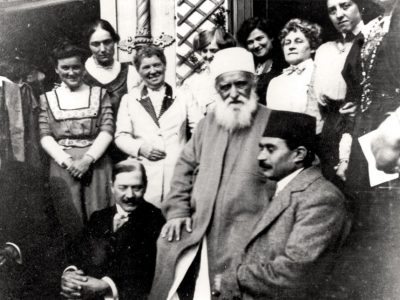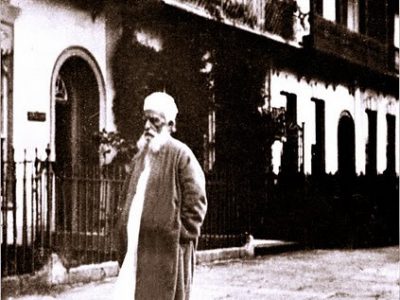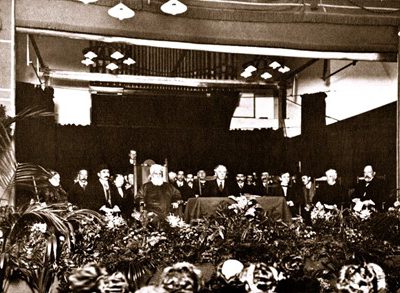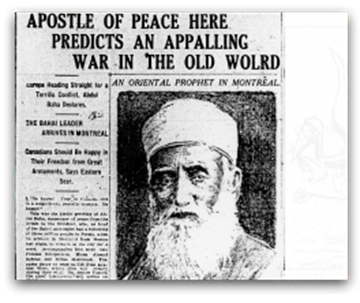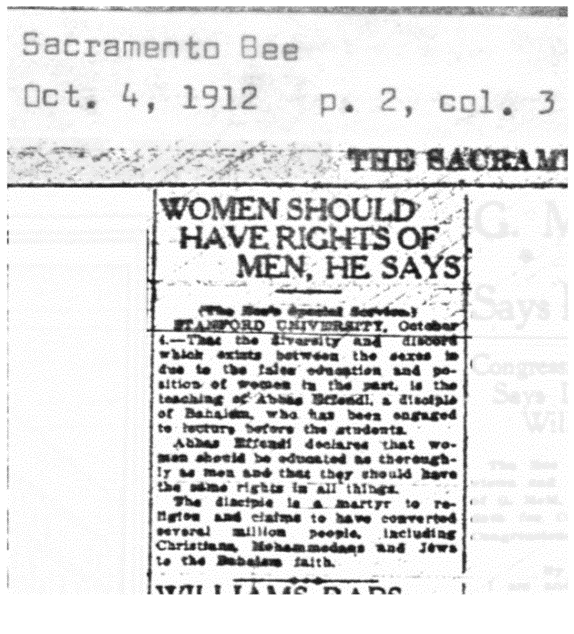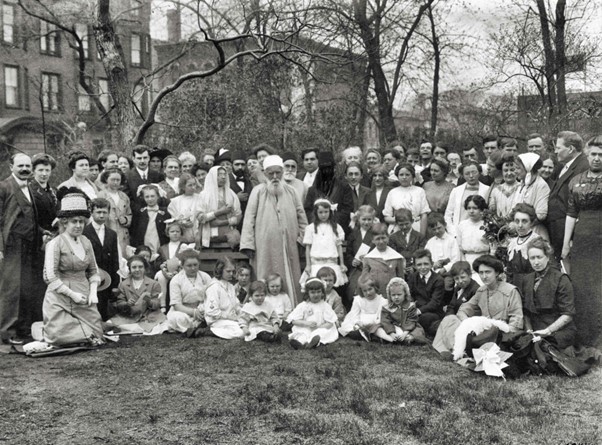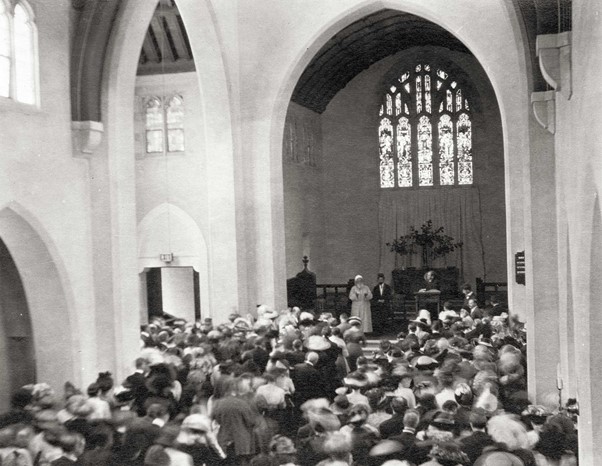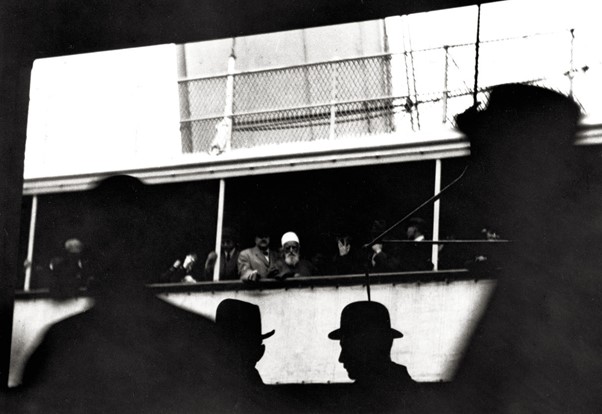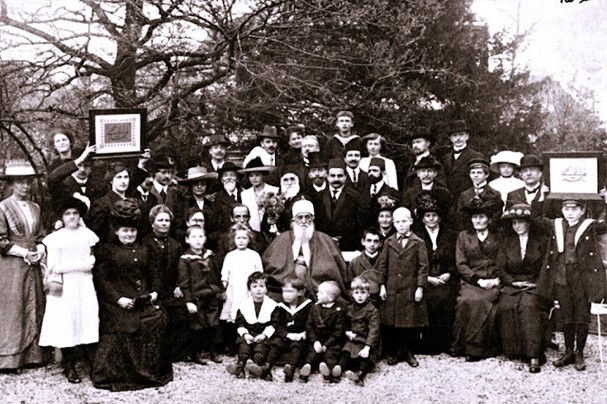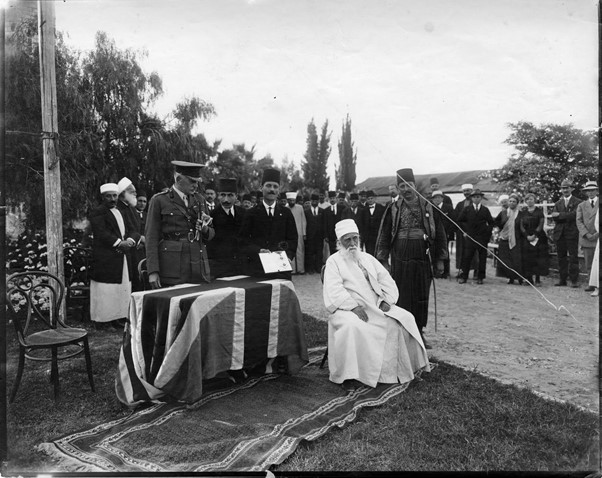“One more eloquent of speech, more ready of argument, more apt of illustration, more intimately acquainted with the sacred books of the Jews, the Christians, the Muhammadans, could, I should think, scarcely be found …”
Professor E.G. Browne
Cambridge University, London
‘Abdu’l-Bahá as the successor of His Father – Bahá’u’lláh, The Prophet Founder of The Baháʼí Faith – and the only authorised interpreter of Bahá’u’lláh’s teachings, led the expansion of the Faith which started in Persia into the East and the West. Currently over 100,000 Baháʼí communities are formed across the world. Bahá’ís regard ‘Abdu’l-Bahá as the perfect exemplar of the Baháʼí Faith – the living embodiment and Bahá’u’lláh’s teachings by word and deed.
This centenary year is an opportunity to reflect on His life and His contributions to the Bahá’í Faith and the cause of unity of mankind and the world peace.
A Life of Exile and Imprisonment
After successive banishments to Constantinople and Edirne, Bahá’u’lláh’s family and fellow exiles were incarcerated in 1868 in ‘Akká, the penal colony of the Ottoman Empire, near Haifa in present-day Israel. The whole city was a prison, cut off by desert on one side and the sea on the other.
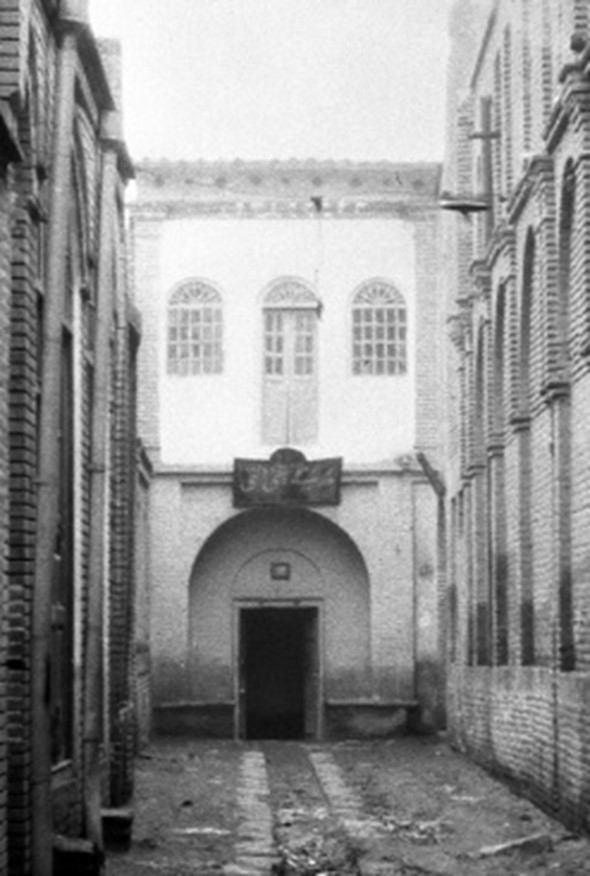
In spite of the family’s privations, He became known for His liberal charity among the poor, who would line up at His door every Friday. “He stations Himself at a narrow angle of the street,” an observer wrote, and motions to the people to come towards Him. … As they come they hold their hands extended. In each open palm He places some small coins. He knows them all. He caresses them with His hand on the face, on the shoulders, on the head. 1
Although Bahá’u’lláh named His son Abbás (in honour of His own father), but ‘Abbás chose to call Himself ‘Abdu’l-Bahá, the “Servant of Bahá”. He devoted His life to serve humanity, became known as the living embodiment and exemplar of Bahá’u’lláh’s teachings.
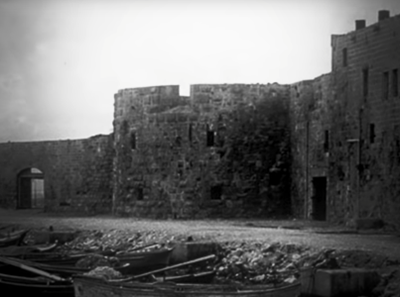
‘Abdu’l-Bahá together with Bahá’u’lláh and His family incarcerated in Akka. ‘Abdu’l-Bahá was freed in 1908 after passing of His Father in 1892.
‘Abdu’l-Bahá’s travels to Egypt, North America, Canada and Europe
‘Abdu’l-Bahá was freed from imprisonment in 1908 when a revolution in the Ottoman Empire released all political prisoners. In 1910 (after completing the construction of the Shrine of The Báb), ‘Abdu’l-Bahá departed Haifa for Egypt, where He stayed there for one year, spending His days meeting diplomats, intellectuals, religious leaders and journalists. In the late summer of 1911, He sailed for Europe, stopping at the French resort of Thonon-les-Bains before traveling to London.
On 10 September 1911, from the pulpit of the City Temple church in London, ‘Abdu’l-Bahá gave a public address for the first time in His life.
His subsequent month-long stay in England was filled with ceaseless activity, promoting Bahá’u’lláh’s teachings and their application to many contemporary issues and problems, through public talks, meetings with the press and interviews with individuals. The days in London, and then Paris, set a pattern that He would follow throughout all of His travels.
In the spring of 1912, ‘Abdu’l-Bahá travelled to the United States and Canada for nine months. He travelled from coast to coast, addressing every kind of audience, meeting people of all ranks and stations.
He travelled across North America for eight months, quickly becoming a recognised participant in the networks that shaped the international peace movement. They called Him the Apostle of Peace.
During ‘Abdu’l-Bahá’s stay in Canada, a reporter for the Toronto Star recorded his impressions as follows:
Picture to yourself a grey-haired man, older than his years, with patriarchal beard and face stamped by much suffering and serious thought, a yet handsome man, with a high, intelligent forehead and the idealistic eyes of a dreamer, a man of power, determination, too, who will tread one path when he knows that it is the right one, yea, though he should lose his life for so doing . . . . Put a white turban on his head and hang a gown of grey canvas over his stately shoulders. Then you will have ‘Abdu’l-Bahá.2
In His public remarks, ‘Abdu’l-Bahá expressed no illusions about the immediate prospects for the cause of peace He championed. “The continent of Europe,” He said, is one vast arsenal, which only requires one spark at its foundations and the whole of Europe will become a wasted wilderness. . . . And what flimsy, what impudent pretexts they use. Patriotism, say they; glory, say they; the up-building of the continent, say they. What a travesty on God’s truth.”3
At the end of the year, ‘Abdu’l-Bahá returned to Britain and early in 1913, to France, from where He proceeded to Germany, Hungary and Austria, returning in May to Egypt, and on 5 December 1913, to the Holy Land.
War broke out in Europe eight months after His return to Haifa, but ‘Abdu’l-Bahá had already prepared for the worst. He had purchased farmland in the Galilee to grow wheat, storing the grain underground near Haifa. When a blockade threatened the region with starvation, ‘Abdu’l-Bahá fed northern Palestine: rich and poor, Muslims, Jews and Christians – a humanitarian act for which He accepted a knighthood from King George V.
‘Abdu’l-Bahá maintained a correspondence with hundreds of individuals, writing 20,000 letters to East and West. During the war years He sent fourteen landmark messages, directing the North American Bahá’ís to fan out across the world to teach their faith.
His unselfish acts had won Him the love and respect of high and low alike. ‘Abdu’l-Bahá consented to accept the knighthood but He was not impressed with worldly honour or ceremony. Even a formality must be simplified. An elegant car was sent to bring Him to the Governor’s residence, but the chauffeur did not find the Master at His home. People scurried in every direction to find Him. Suddenly He appeared ‘alone, walking His kingly walk, with that simplicity of greatness which always enfolded Him.’ Isfandiyar, His long-time faithful servant, stood near at hand. Many were the times when he had accompanied the Master on His labours of love. Now, suddenly, with this elegant car ready to convey his Master to the Governor, he felt sad and unneeded.
Intuitively, ‘Abdu’l-Bahá must have sensed this. He gave him a sign. Isfandiyar dashed off and the horse was harnessed, the carriage brought to the lower gate and ‘Abdu’l-Bahá was driven to a side entrance of the garden of the Governor. Isfandiyar was joyous he was needed even yet. Quietly, without pomp, ‘Abbas Effendi arrived at the right time at the right place and did honour to those who would honour Him when He was made Sir ‘Abdu’l-Bahá Abbas, K.B.E. a title which He almost never used.4
Passing of ‘Abdu’l-Bahá
‘Abdu’l-Bahá passed away at the age of 77 on November 28, 1921 in Haifa. Ten thousand people attended His funeral. In His Will and Testament He laid out a system of local, national, and international elected bodies, and governing norms, to secure the unity of the Bahá’í Faith and direct its ongoing growth and community life.
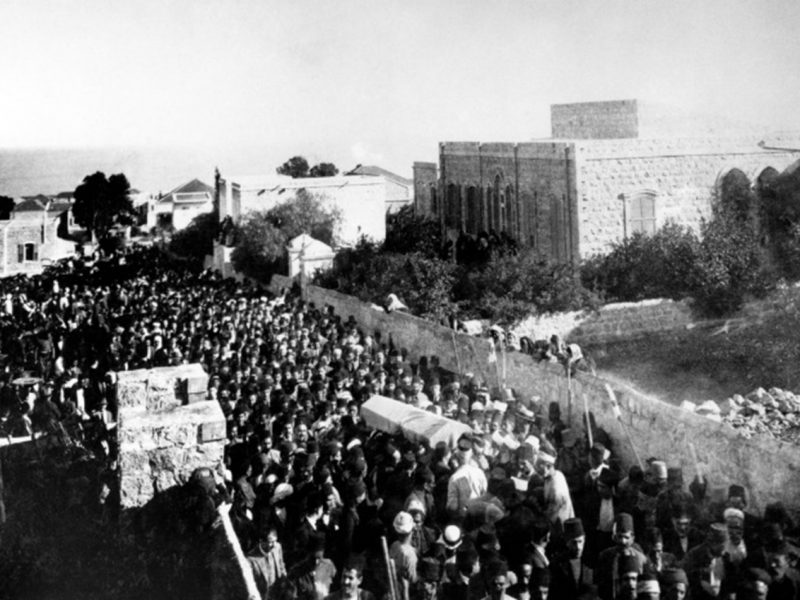
Legacy of ‘Abdu’l-Bahá
A century later the Bahá’í Faith remains unique in having resisted the forces of division that have splintered the world’s major religions into denominations and sects. Bahá’ís now live in more than 100,000 localities worldwide and Bahá’í institutions have been established in more than 200 countries and territories.
The first Local Spiritual Assembly (LSA) in Australia was formed in Melbourne in 1923. The community struggled to maintain itself for a number of years. The second LSA of Australia was elected in Perth in 1924. The National Spiritual Assembly (NSA) of Bahá’ís of Australia was formed in 1935 and formally incorporated in 1956. The NSA’s major functions include directing the spiritual and administrative affairs of the Bahá’í community of Australia. It supervises, unifies, promotes and administers the activities of the Bahá’ís of Australia in the fulfilment of their religious offices, duties and ideals. These activities include devotional gatherings, promotion and provision of Bahá’í children classes, junior youth spiritual empowerment program, study circles and related programs and activities of an educational, humanitarian and spiritual character. It organises the National Bahá’í Convention; publishes books and periodicals; maintains the Bahá’í House of Worship and Bahá’í Centres of Learning throughout Australia.

Today, the principles which ‘Abdu’l-Bahá advocated on religious unity, international peace, racial and economic justice, the equality of men and women, and many of issues surrounding humanity, are placed to the forefront of most discourses in societies across the world. Bahá’ís worldwide come from more than 2000 national and ethnic groups.
It has now become clear that through the power of ‘Abdu’l-Bahá’s example – the leadership He provided, the writings He left, the plans He made, and the institutions He created – the growth of the Bahá’i Faith as a global religion, and its distinctive pattern of community life, are largely the result of His life and work.
‘Abdu’l-Bahá’s travel to USA, Canada and Europe infused the scattered Bahá’ís with a sense of themselves as a community and a direction for the spread of their faith that would last for centuries to come.
“I have sown the seed,” ‘Abdu’l-Bahá told His listeners on His last day in Montréal. “You must water it.”
The Holy Shrine of ‘Abdu’l-Bahá
The Shrine of ʻAbdu’l-Bahá is the location in Israel wherein the remains of ʻAbdu’l-Bahá, one of the central figures of the Baháʼí Faith, are interred. Since his death in 1921, ʻAbdu’l-Bahá’s remains have been located in one of the rooms of the Shrine of the Báb in Haifa, Israel.
However, in on 20 April 2019, the Universal House of Justice announced that the time for the construction of a permanent Shrine of ʻAbdu’l-Bahá had come, and provided initial details: That time has come. The Baháʼí world is being summoned to build the edifice which will forever embosom those sacred remains.
The design concept for the permanent Shrine of ‘Abdu’l-Baha in Akká “This should be unlike any other building,” explains Hossein Amanat, who has been selected as the architect for this historic initiative. “It seeks to manifest ʻAbdu’l-Bahá’s selflessness, wisdom, openness, acceptance, and kindness towards all people, to embody His love for gardens and nature, and to reflect His progressive and forward-looking approach.” Mr Hossein Amanat is a distinguished Iranian-Canadian architect best known for his designs of three of the buildings of the Arc on Mount Carmel in Haifa as well as the Azadi Tower in Tehran.
The work has begun on the Shrine of ‘Abdu’l-Baha. The chosen site near the Ridván garden in Akká has been prepared, and construction is progressing since 2019.
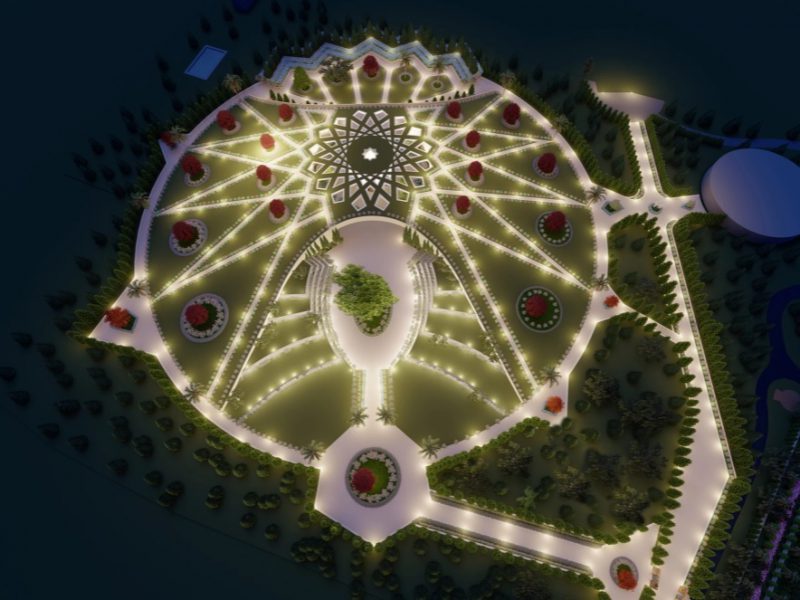
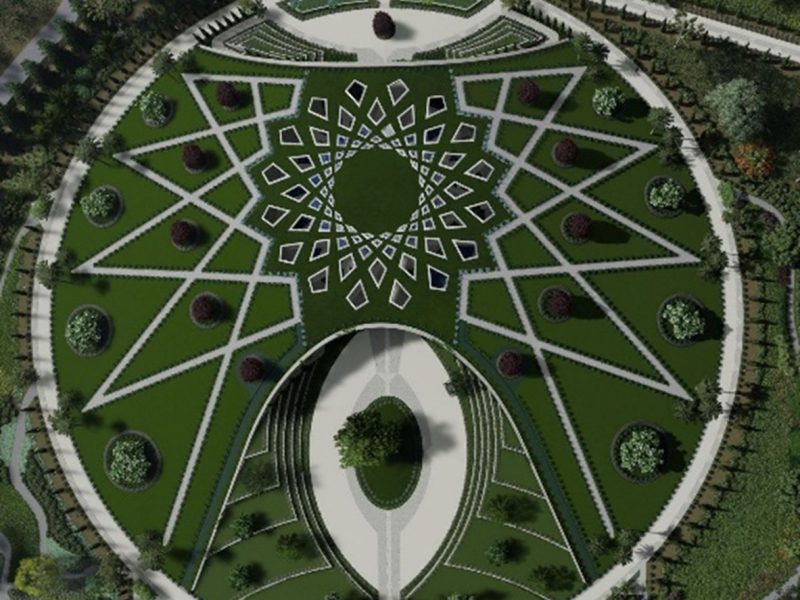
Read More
100 years ago, historic journeys transformed a fledgling faith
The Extraordinary Life of ‘Abdul-Bahá
Apostle of Peace Here Predicts an Appalling War in the Old World
‘Abdul-Bahá in Canada
‘Abdu’l‑Bahá, the Head of the Bahá’í Faith after the passing of Bahá’u’lláh
‘Abdu’l‑Bahá, The Perfect Exemplar
‘Abdu’l‑Bahá – Servant of Glory
Coverage of construction work for the Shrine of ‘Abdu’l‑Baha
Concept Design Images of the Future Shrine of ‘Abdu’l-Baha
‘Abdu’l‑Bahá’s travel to Canada
‘Abdu’l‑Bahá’s travel to United States
‘Abdu’l‑Bahá’s travel to Europe
Travels of ‘Abdu’l‑Bahá to the West and Europe (in Persian language)
Local Spiritual Assembly
National Spiritual Assembly of Australia
Footnotes
- This excerpt is from Myron Phelps, Life and Teachings of Abbas Effendi, 1903.
- Printed in the Toronto Star Weekly, 7 September 1912, quoted in Amín Egea, The Apostle of Peace: A Survey of References to ‘Abdu’l-Bahá in the Western Press, 1871–1921, Vol. 1, 414.
- From theBuffalo Courier, 11 September 1912. The full article is posted on the Bahá’í News Service.
- Excerpts from Vignettes from the Life of ‘Abdu’l-Bahá by Annamarie Honnold and The Chosen Highway by Lady Blomfield.

